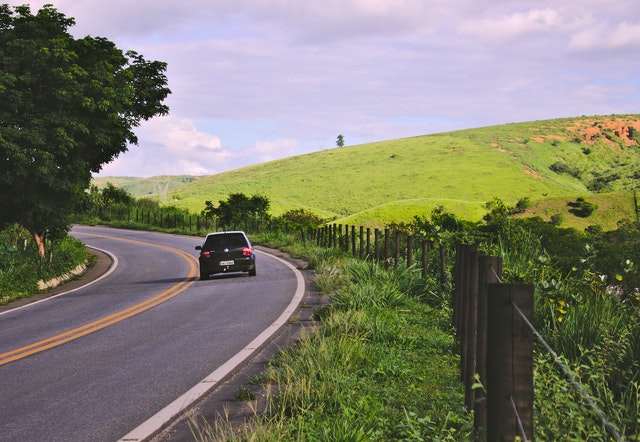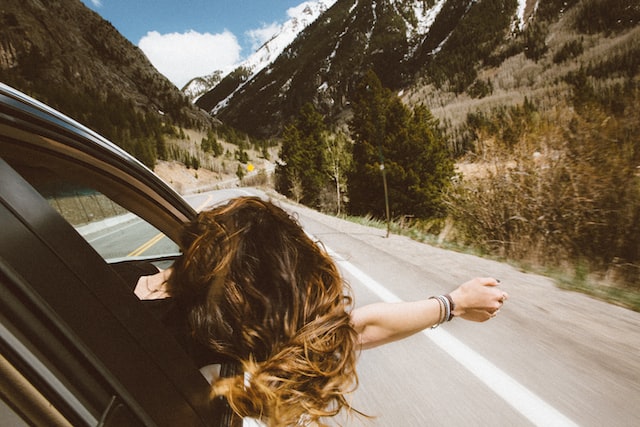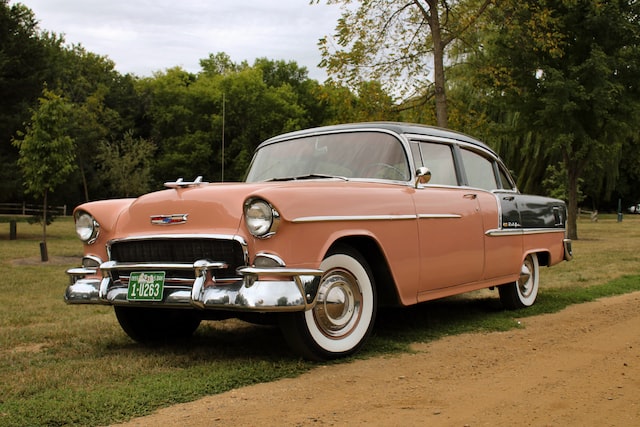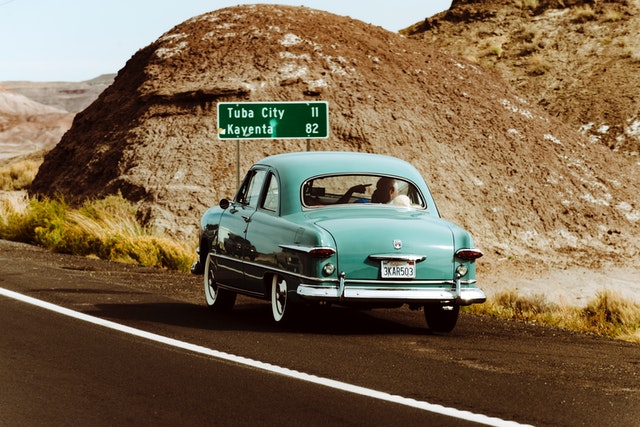During picnics in mountainous areas, parking on steep hills is a common occurrence, be it a stop to admire the scenery, rest, or camp overnight. Even when driving in the street, sometimes you have to stop and park in the middle of a hill (apartment cellar, slope to a dike, etc.). Perhaps most of us still think that parking on a hill is not much different than on a flat road.
But if you have to park for a long time overnight or where there is a steep hill, you will need additional actions to avoid possible risks for you and those around you, especially with SUVs and semi-trucks. . Many unfortunate accidents have also happened because of improper parking errors, drifting cars or collisions with other cars…
So, how to park on a hill? Follow the following article to learn the safest and most effective techniques.
Common situations
When parking uphill with a curb
With ramps and sidewalks, you need to make sure that the distance between your car and the curb is 20-30 cm. The action to be taken when parking is to turn the steering wheel to the left and then reverse the car slowly, slowly so that the right front wheel is inserted into the base of the curb and does not return the steering wheel to a straight position.
A note when parking, in this case, is not to drive all the way to avoid damage to the car as well as interfere with other traffic. Once you’ve done all of the above, the last thing you need to do is pull the handbrake, turn off the engine and shift the car to P or 1st gear.
When parking uphill without a curb
In this situation, the safe way to park is, instead of steering to the left, you need to turn all the way to the right when you have brought the car to a parallel park to the edge of the road. In case the car does go downhill, it only needs to turn inward and stop, not “falling downhill without braking”, potentially causing serious traffic accidents.
The car is going uphill and you want to stop
The first thing when you want to stop is to signal to the vehicles behind you to know your stop signal. Next, drive to the right side of the road, combine the accelerator, the foot brake, and the handbrake. If you just want to stop the car in seconds to solve your personal needs… then that’s enough.
When you want to continue the journey, you just need to release the foot brake, switch your foot to the accelerator quickly, push the accelerator to move the car, and then release the handbrake. Do not remove the handbrake before you step on the accelerator because then the car will lose the brake, reducing the life of the gearbox and being very dangerous.
How to park on a hill?

How to park on a hill with a manual transmission car?
Uphill parking
Driving a manual transmission uphill is a bit more complicated than an automatic car, but it can be done easily if the driver knows the technique.
- Step 1: Accelerate evenly when approaching the bottom of the hill
When approaching the foot of the hill, the vehicle should accelerate slowly but also pay attention to maintain a safe speed. Increasing the speed evenly when approaching the hill will create momentum (inertia) to help avoid the vehicle climbing weakly. Note that you should only accelerate lightly and evenly, do not emphasize the accelerator pedal, especially when driving on slippery roads, driving in the rain…
- Step 2: Depress the clutch, gradually shift to low gear
When approaching the foot of the hill, gently release the accelerator, step on the clutch and let the car turn to low gears. When releasing the throttle to shift gears, the engine rpm will decrease. Therefore, it is necessary to pay attention to the rotation of the engine, the speed of the vehicle is consistent with the gear you intend to change. Usually, in 3rd gear, the engine rpm will be from 3,000 – 4,000 rpm or a speed of 45 – 60 km/h. Number 2, the engine rpm will be from 2,000 – 3,000 rpm or a speed of 30 – 45 km/h. In 1st gear, the speed will be from 15-25 km/h.
- Step 3: Release clutch, gas cushion
After shifting to low gear, gently release the clutch pedal and coordinate the accelerator pedal. Engine rpm will decrease when the car is in low gear. Therefore, a stronger accelerator pedal is needed to balance engine rpm with vehicle speed.
- Step 4: Shift to 1st or 2nd gear when going uphill
Depending on the steepness of the hill, you will choose to climb by number 1 or number 2. With a gentle hill, you can climb by number 3. The higher the hill, the lower the number, and vice versa. When starting to pedal uphill with a manual transmission, release the accelerator, step on the clutch, and shift into the appropriate gear. Then slowly release the clutch pedal in conjunction with the accelerator pedal to move the car uphill.
- Step 5: If the car is out of breath, shift to a lower gear
If you are going uphill and see the car growling a lot, the car is missing the gas … then this is a sign that the wrong number has been selected when going uphill, resulting in insufficient traction. To avoid squeezing the car, causing the car to overheat, or stalling in the middle of the road, step on the clutch and then shift to a lower gear. Then release the clutch and strongly cushion the accelerator.
Downhill parking
The way downhill for a manual transmission car is not too difficult. When the car nears the top of the hill, start to slow down slowly to prepare to go downhill. At the same time, let the car gradually shift to low gears. To know the right gear to go downhill, the driver just needs to apply the principle of “getting down to that gear”. However, you should also be flexible in choosing the number according to each situation. The smaller the number, the greater the braking, the slower the speed.
Read more >> Hand Signals for Driving: Left Turn, Right Turn, and Stop
How to park on a hill with an automatic transmission car?
- Uphill parking
Driving an automatic transmission car uphill is simpler than a manual transmission car. Because the car has automatically calculated the appropriate gear shift, the driver does not need to intervene. When going uphill, the gear lever just needs to be in D mode (Drive – forward gear) as usual.
When approaching the bottom of the hill, start to accelerate slowly to build early momentum. When climbing uphill, the accelerator pedal force will depend on the steepness of the hill. Do not step on the accelerator too hard, it can cause the car to jerk and accelerate dangerously. Do not step on the accelerator too weakly, making the car not strong enough to climb uphill.
In the case of steep hills and heavy trucks, the driver who wants to have better control of the vehicle when climbing uphill can switch the vehicle to manual mode. First, reduce the accelerator, then shift the car to low gear via the gearshift lever on the steering wheel (-) or the gear lever (shift to M-, L/L1, or D3/D2/D1). The steeper the hill, the smaller the number to create greater traction.
- Downhill parking
The technique of driving downhill with an automatic is a bit more complicated than going uphill. Because if you go uphill, you can let the car automatically change gears, then when going downhill, you should use the manual transmission mode if you encounter a steep hill. This is the advice of most drivers who have a lot of experience driving downhill, experience driving downhill roads… Because when using manual mode, the driver will be more active in controlling vehicle speed, limiting vehicle speed. Use the brakes a lot.
Depending on the steepness of the hill, select the appropriate manual mode. The steeper the hill, the lower the number. Choosing the right gear is that when going downhill, the driver does not need to use the brakes much. Because at this time the car has been braked by the engine. In case you have switched to a low gear, but the vehicle speed is still high, the brake lever should be changed to a lower gear. For steep hills, the lowest number should be D1 or the low number L.
Principles of uphill parking/ downhill parking
- Only downhill with low gear
When going downhill, the vehicle is subject to a great inertia force, so the speed will increase. Hence only downhill by low gear. This helps the vehicle to be braked by the engine. Thanks to that, the driver can easily control the vehicle speed, without using the brake much. Never change gears to N when going downhill. Because the car will fall into a free state, not being braked by the engine, it is very difficult to control.
- Do not apply the brake
Absolutely do not apply the brake for long distances when going downhill. Because the vehicle is going downhill, the large inertia force will put the brake system under high pressure. If you check the brakes continuously, the brakes will be hot, the brake pads and brake discs will be worn, burned, easily leading to a situation where the brakes don’t eat or the car loses its brakes. So instead of applying the brakes to slow down the car, shift the car to a low gear to take advantage of the braking force from the engine. In case you need to step on the brake, apply the brake firmly.
- Keep a safe distance from other vehicles
Whether going uphill or downhill, you need to keep a safe distance from the vehicle in front. According to the experience of driving uphill and downhill of old drivers, it is advisable to keep a distance from the vehicle in front from 4 to 10 seconds. If the hill is steep, the road is slippery, you should keep a distance of at least 10 seconds from the car in front.
When climbing a hill, absolutely do not follow the rear of the vehicle in front, especially large vehicles such as passenger cars, trucks, tractors, containers… Because when climbing the hill, it will take more time to handle unexpected situations. tailgating is very dangerous if the car in front has an accident.
- Do not overtake the vehicle when climbing uphill
Never overtake a vehicle when climbing a hill except in an emergency. Because it would be very dangerous. The Traffic Law also stipulates that it is not allowed to pass vehicles when at the top of a hill, locations with limited visibility, unsafe roads to pass…
- Unnecessary devices should be turned off
In the case of heavy trucks, climbing steep hills, it is necessary to put all the “power” of the engine to climb the hill to avoid the case of the vehicle missing the gas and losing momentum midway. Therefore, it is recommended to temporarily turn off electrical equipment that is not designed on the vehicle such as the car air conditioner, car screen, speakers … to reduce the load on the engine, avoid overloading the engine, and overheating the car.
- Give way for vehicles going uphill
According to the provisions of the Road Traffic Law, vehicles going downhill must give way to vehicles going uphill. Because cars going uphill need more momentum, work harder. If the car has to stop and then reverse the hill, the pressure will be even greater due to the loss of momentum.
Improper handling can cause the vehicle to drop downhill. While the car is going downhill, it is only necessary to control the speedwell with the gearbox and brake. Therefore, according to the principle, the vehicle going downhill must give way to the vehicle going uphill.
Tips for new drivers

In driving techniques, going up and downhill always confuses many new drivers, especially when the two sides of the road are high mountains or deep abysses.
Driver training experts advise new drivers to pay attention to a few points:
- Before going uphill, downhill it is necessary to check the clutch, front brake, rear brake, gears, and throttle. If you see any parts that have not been adjusted, they must be treated immediately.
- When going uphill, the gear must be geared in accordance with the technical features of each vehicle, with the weight of the cargo carried on the vehicle. Pay attention to the “fast and sensitive” technical operation when you need to reduce gears to continue climbing uphill, avoiding the gear jam.
- When going down a long hill, the car accelerates faster. If there is a sudden emergency needing to brake quickly, you must use a “combination” of both the rear brake, front brake, downshift, accelerator, and clutch release.
- When the car goes down the ferry ramp: When coming down and the wheel touches the bridge, let the car stop for a moment to reduce the gear and then crawl onto the ferry.
- Slope clutch is only applicable when stopping on a slope for a short time, not when you have to park or stop for a long time. Accordingly, the driver will combine the right clutch and at the same time increase the throttle just enough so that the car has enough traction to prevent the car from drifting but also not moving forward.
Steering uphill tips
Currently, there are two basic experiences on how to steer uphill that new drivers should keep in mind to operate the vehicle more efficiently:
- The most effective way for drivers is that after the vehicle has stopped on a hill, you pull the handbrake with the purpose of replacing the foot brake to keep the vehicle at the stop. At that time, you can remove the brake pedal and put the accelerator pedal up. At the same time, the left foot releases the clutch slowly, until the steering wheel or gear lever vibrates, gently releases the handbrake, listens if the car does not slip, releases the handbrake and the vehicle will crawl up on its own. You can gently tap the accelerator if the car is not moving.
- The more adventurous way, for those with experience driving often used in practice, is not to use the handbrake. After the car stops, slowly release the clutch until you see the steering wheel or gear lever vibrate, release the foot brake and listen.
If you feel the car drift, apply the brake and do it again. If the car does not slip, release the foot brake and the car will crawl up on its own. If the foot brake is fully released but the car is still stationary, then press the accelerator pedal a bit, and at the same time release the clutch slightly. When the car has gone, keep the clutch and accelerator in place until the car passes the top of the hill.
You see, it is not difficult to answer the question “How to park on a hill?”. Let’s follow our suggestions to ensure safe uphill or downhill parking. Besides, always keep in mind to follow the parking principles.
Visit our website and try the free DMV practice test to grasp all the essential knowledge to stay safe on the road, or download it for your IOS or Android devices now!
Good luck to you!

UT Utah License Renewal: A 2024 Comprehensive Guide
Discover the ultimate guide to Utah license renewal! This comprehensive guide delves into the intricacies of renewing your driver's license in Utah,...
February 13, 2023

South Carolina S.C. Driver's License Renewal
The South Carolina S.C. driver's license renewal process is designed to be comprehensive, taking into consideration eligibility requirements, renewal methods,...
February 13, 2023

Pennsylvania PA DMV License Renewal: A 2024 Full Guide
The Pennsylvania PA DMV license renewal process is designed to be comprehensive, taking into consideration eligibility requirements, renewal methods,...
February 10, 2023

